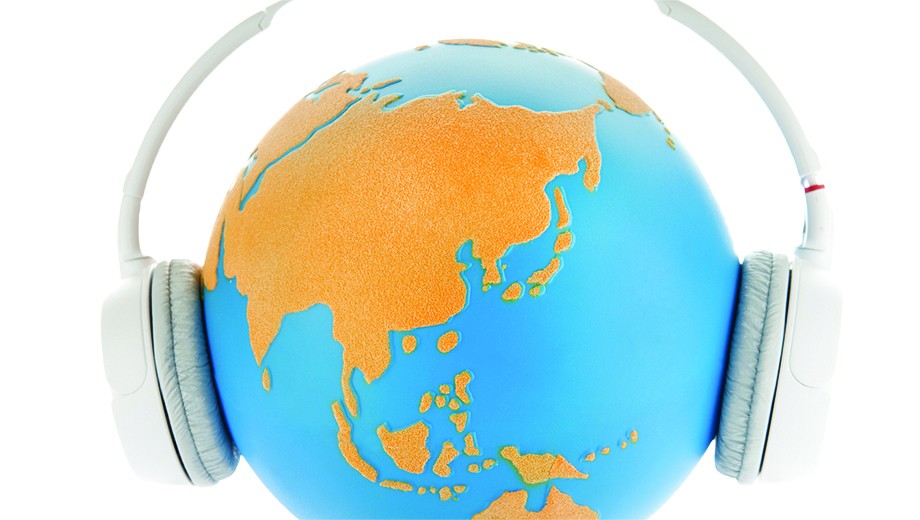With the click of a mouse, someone interested in learning the West African language Pulaar can get a sense of how it sounds from a Foreign Service Institute recording. An ethnographer or literature student can hear a myth in Borum Krenak, an Indigenous language of Brazil. A musicologist can listen to folk songs in Naxi, a language spoken in China’s Yunnan Province.
All these recordings, plus many more, are housed in the University’s Online Language Archive, (OLA) now fully digitized as part of the University Library.
Beginning with the efforts of Clarence E. Parmenter, PhB 1911, PhD 1921, a former faculty member in Linguistics and Romance Languages and Literatures and a pioneer in the field of phonetics, the University slowly began to accumulate recordings of different languages. The early acquisitions were on phonograph records, and mostly in common European languages like French and Italian, but they soon grew to include field recordings of languages—whether their speakers numbered in the millions or in the dozens—from all over the world. Among the most notable are recordings of Mesoamerican languages by anthropologists Manuel Andrade and Norman McQuown.
The archive launched as the Ford Foundation International Studies Language Laboratory in 1962, when it was housed in the Social Science Research Building. It became the Language Laboratories and Archives in 1988, the Digital Media Archive in 2006, and now the OLA.
The archive served three purposes: (1) to build and maintain an archive pertaining to languages, including printed and audio material; (2) to provide instruments for the pursuit of linguistic research; and (3) to foster language learning for College students.
As the years passed, the archive’s purpose evolved to the point that Elena Bashir, senior lecturer emerita in South Asian Languages and Civilizations and a member of the OLA’s faculty steering committee, says its primary purpose today is not language study; its more important function, Bashir explains, is to preserve and archive languages, especially those that are endangered and hardly ever taught in universities. Linguists benefit from these archives, Bashir notes, as do anthropologists, historians, and the curious public. With the launch of the OLA’s online portal, the collection is now accessible by all these groups—including members of speaker communities, who might be able to hear their distant relatives using a language that reflects their shared heritage.
By the Numbers
Here are some facts and figures on the OLA.
232 - Total languages, from every continent except Antarctica
5,472 - Total hours of recordings
< 5 - Native speakers of Dieri, an Indigenous language of South Australia represented in the OLA, as of the year 2021
2013 - The year of death of the last native speaker of Yurok, an Indigenous language of Northern California represented in the OLA
1955 - The year of a recording of the Lord’s Prayer and some poetry in Manx, the native language of the Isle of Man. Manx was declared extinct in 2009, though it is making a comeback.
412 - Number of tapes, on five-inch reels, in one collection featuring native speakers of Tzeltal and Tzotzil, two Mayan languages still spoken in southern Mexico, totaling 230 hours. UChicago Anthropology faculty and students made the recordings from 1956 to 1962, interviewing hundreds of native speakers in Mexican villages.
59 - Years Joe Toth worked for the Language Laboratory, which evolved into the Digital Media Archive (DMA) and then the OLA
3 - Formats for digital files, evolving with technology: DAT cassettes, CDs, and their current format of WAV/ mp3 files. Prior to digitization, the recordings were on vinyl LPs, reel-to-reel tapes, and even aluminum cylinders and wax cylinders.

